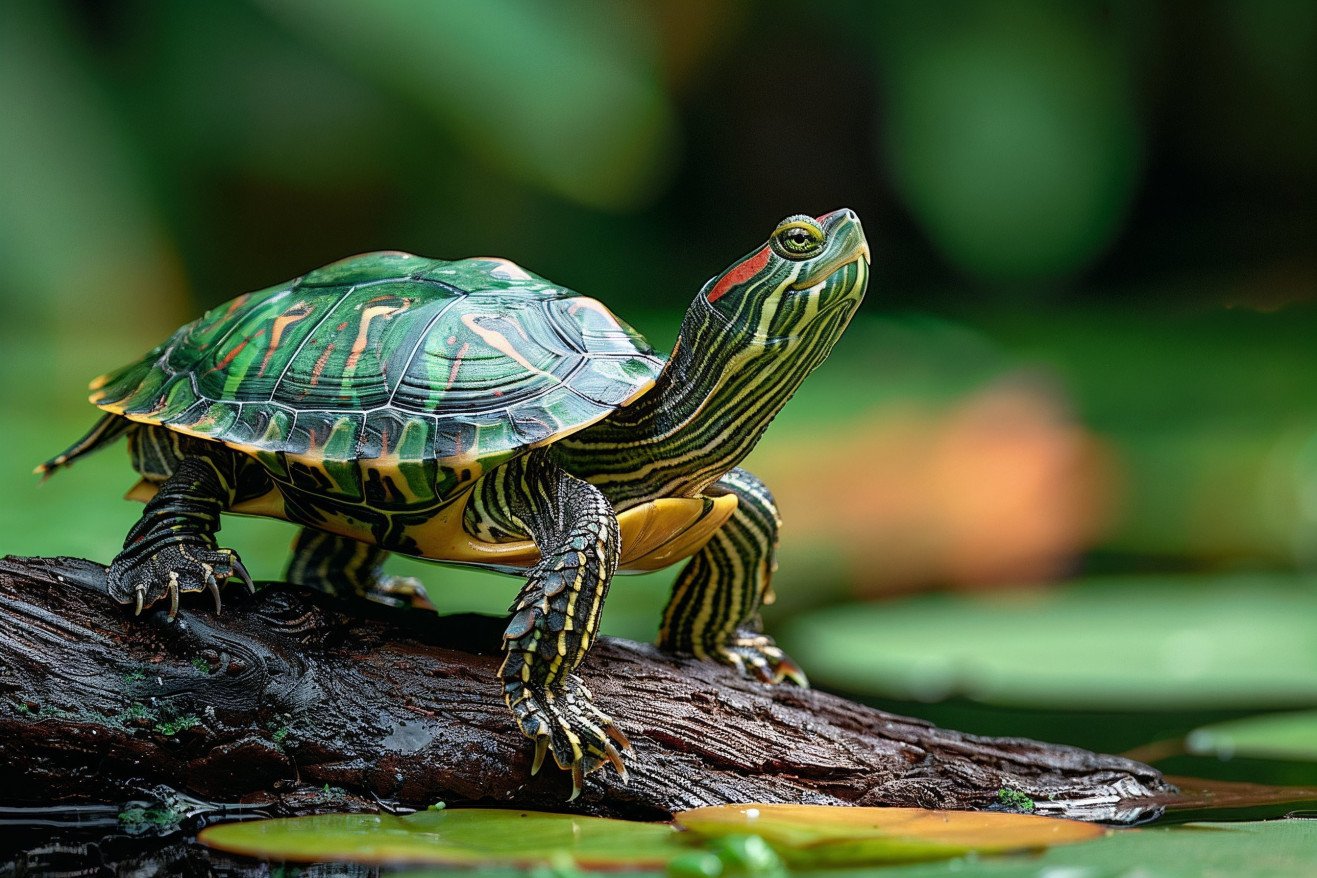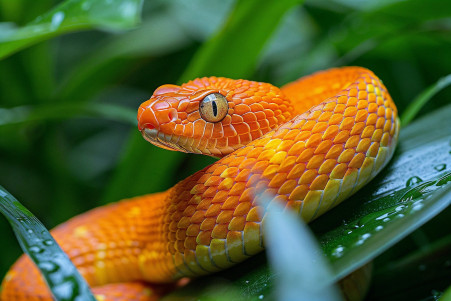Why Do Turtles Have Tails? The Surprising Truth About Their Many Uses
4 March 2024 • Updated 4 March 2024

Turtles are one of the most unique and diverse groups of reptiles, yet their tails are often one of the most overlooked parts of their anatomy. However, every species of turtle has a tail, and they all have a number of different uses, including mating, balance, and protection. Male turtles have longer tails than females because they contain the reproductive organs that are necessary for the continuation of the species.
In this investigation into the world of turtles and their tails, we will delve into the world of zoological research and comparative anatomy. We will also look at the physical differences between species, the evolution of turtles and their tails, and the way that tails help turtles survive and thrive in different environments.
By combining research from a number of scientific fields, we hope to build a complete picture of why turtles have tails and how they work in the larger context of turtle biology.
Why do turtles have tails?
The Tail’s Tale: A Key Component of Turtle Anatomy
The complex and crucial nature of the turtle tail is made possible by the turtle tail’s connection to the rest of the body through a specialized musculoskeletal system. The system is characterized by the tail’s vertebrae, which protrude from the rest of the shell, enabling the tail to move and bend.
As the Turtle Ally Certification Program explains, turtles have a musculoskeletal system in which the ribs, vertebrae, and clavicles are fused with the shell, demonstrating how important the tail is to the turtle’s anatomy.
The size and shape of the tail can differ greatly between the 360 species of turtles. According to Learn About Nature, some species, such as the Snapping Turtle and the Big-Headed Turtle, have tails that are nearly as long as their shells and are covered in bony plates for extra protection. On the other hand, as BioExpedition points out, sea turtles have prehensile tails that help with reproduction and balance.
In particular, male turtles use their tails to protect and encase their reproductive organs. The tail also covers the cloaca, which is used for mating and waste elimination.
Contrary to popular belief, it’s important to note that turtles do not have the ability to regenerate their tails. While turtles can recover from minor tail injuries with the right care, they can’t grow back their tails, as this is outside the realm of their biological capabilities.
A better understanding of the turtle tail’s anatomy, from its connection to the shell to the way it varies from species to species, can help us better appreciate its place in the turtle’s evolutionary past.
Following the Trail of Turtle Tails: An Evolutionary Pathway
The story of turtle evolution is written in the anatomy of their tails, a story of adaptation and success. According to Smithsonian, the recent discovery of Pappochelys, an important transitional form in turtle evolution that lived 240 million years ago, shows a mix of features from earlier and later turtles and helps to explain the importance of tails to these ancient reptiles.
Natural selection has shaped the fates of species, and as a result, the tails of turtles have evolved in different ways to help them survive in a variety of environments. According to ThoughtCo, the turtle family tree is full of gaps and periods of gigantism, and the importance of tails in these developments is clear.
Fossil evidence, including that of the oldest turtle, Eunotosaurus, and the slightly younger Odontochelys and Proganochelys, gives tantalizing clues about the evolution of tails.
According to Britannica, early turtles, although they didn’t yet have a fully formed shell, had the precursors of the structures, including a tail that later turtles like Proganochelys would use for protection, showing a change in the function of the tail from one that was used for burrowing to one that was used for defense.
In considering the evolutionary importance of tails, we can see how they have been a part of the remarkable progression of turtles over millions of years, a progression that has continued to the present day in the complex behaviors that these tails have inspired in modern turtles.
Turtles Use Their Tails to Communicate
While turtle tails are often overlooked, they are a critical part of turtle communication. For example, during mating, male turtles wrap their tails around the female’s cloaca, a behavior that the Olive Ridley Project says is necessary for successful insemination. This isn’t just a physical act, it’s a behavioral exchange that’s important for the survival of the species.
Turtle tails aren’t just used for mating, they are also used for defense. The Nashville Wildlife Conservation Center says that the common snapping turtle uses its long tail, which is similar to its powerful jaws, to fend off predators in its natural habitat.
The potential for turtle tails to be used in communication is more subtle. The Turtle Conservation Society of Malaysia says that while adult sea turtles are generally solitary, baby turtles use soft calls to coordinate their hatching, a behavior that’s important for their survival and starts before they are even born.
Other unique turtle tail behaviors are still being uncovered, and they display just how complex these ancient animals are. Understanding how turtles utilize their tails to communicate provides insight into the detailed world of turtle communication, and reveals the extent of turtles’ adaptations and evolution.
The Many Shapes of Tails: Why Turtles Have Different Tails
Turtle tails are as varied as the turtles themselves, demonstrating a wide range of sizes, shapes, and purposes. Sea turtles, which are found all over the world, have tails that are not only varied in shape but also in purpose.
According to Turtle Time, Inc., female sea turtles have tails that are short and don’t extend past their rear flippers, while male sea turtles have tails that are long and extend well past their rear legs, a characteristic that is important for mating.
These differences in tail structure are not random but instead are adaptations that have evolved to fulfill specific purposes in response to the demands of their environment. For example, the paddle-shaped limbs and streamlined tails of sea turtles have evolved to help them swim more effectively, which is important for moving through the open oceans.
According to Ocean Realm Images, the leatherback turtle’s tail has evolved to help it dive deeper and is related to the turtle’s unique shell structure.
On the other hand, as described by AnimalWise, the tails of land turtles have evolved to help them move more effectively through their more solid environment. While these tails may not be used for swimming, they do help the turtles get traction as they move on land.
The differences in the tails of different turtle species are a great example of the interplay between form and function, which has evolved in response to the demands of their environment and mating habits, and shows the amazing artistry of evolution. When we look at the tails of turtles, we can see the many adaptations that have evolved to help them survive and reproduce.
The Evolution of Turtle Tails
The life of a turtle’s tail begins long before it ever hits the water or land. From the embryonic stage, which is outlined in A Field Key to the Developmental Stages of Marine Turtles by Jeffrey D. Miller, external structures are shown to develop in a series of stages that go all the way to hatchling emergence. As turtles grow from embryos to adults, their tails change in size and complexity.
These tails are formed under the direction of genetic factors, as is shown in research on the carapacial ridge, a key part of turtle embryology that is detailed in the Embryo Project Encyclopedia.
These genes, which are responsible for the turtle’s body plan, direct the growth and differentiation of the tail. When these genes are mutated, it can lead to changes in the tail that can impact a turtle’s health and even its ability to survive.
When you take into account the complex interaction between genetics and the environment in the development of turtle tails, it’s clear that these processes are important to the overall health of turtles. These stages of development are a great example of the fine line that nature walks, as they are important to the turtle’s ability to move and reproduce.
The Evolution and Function of Turtle Tails: A Recap
In the intricate mosaic of turtle diversity, the tail emerges as a constant and critical feature in the lives of all species, serving important roles in reproduction, defense, and communication.
This importance is evident in the way the tail’s anatomy is so carefully balanced in relation to the rest of the turtle’s body and in the way that tail size and shape varies between species.
The discovery of transitional forms like Pappochelys adds to our understanding of the evolutionary history of turtles, and shows how natural selection has worked to shape the development of the tail in ways that promote survival and adaptation.
From a behavioral perspective, the turtle tail is a detailed and significant part of the lives of these ancient animals, contributing to elaborate mating displays and acting as a defense mechanism. The diversity of tail form is influenced by a variety of factors, including the turtle’s habitat and mating behaviors, and this diversity is evidence of the adaptability and significance of the turtle tail across species.
In sum, the study of turtle tails—from their developmental biology to their evolutionary history and their behavioral roles—has shed light on the biology of these fascinating animals. Considering the tales of the turtle tail helps us understand the interplay of form and function in the world of living things and the constant interplay of adaptation in nature.


